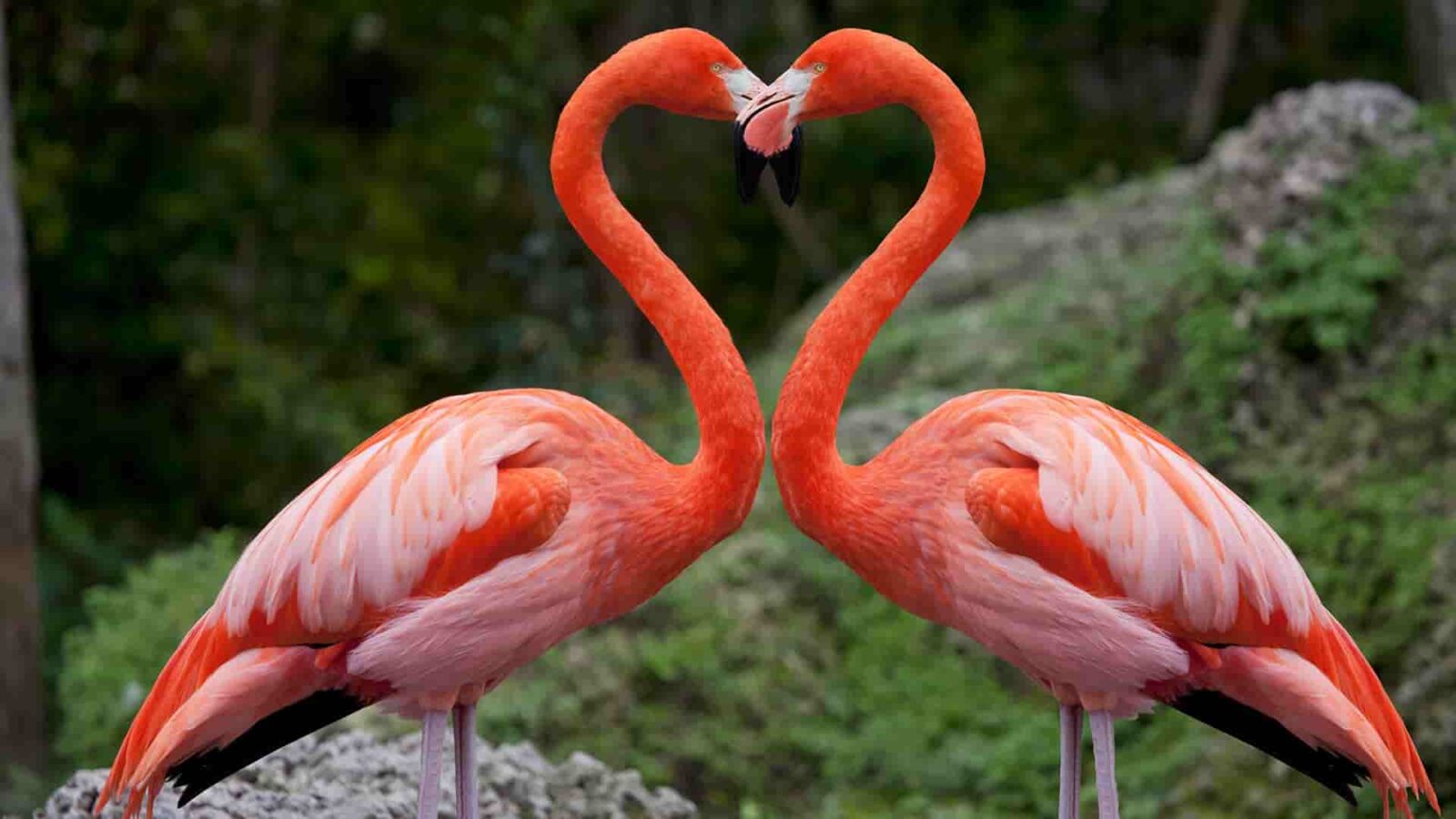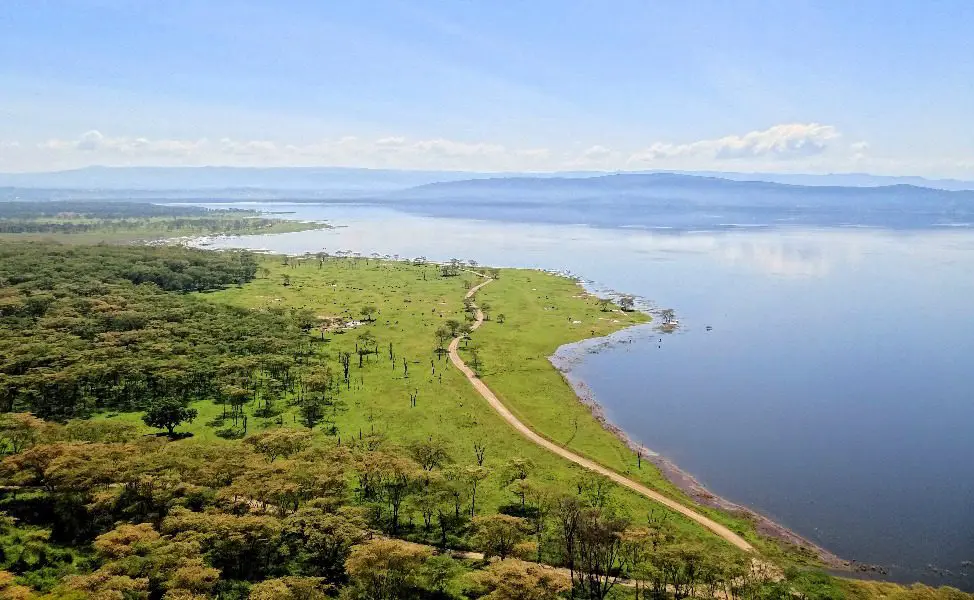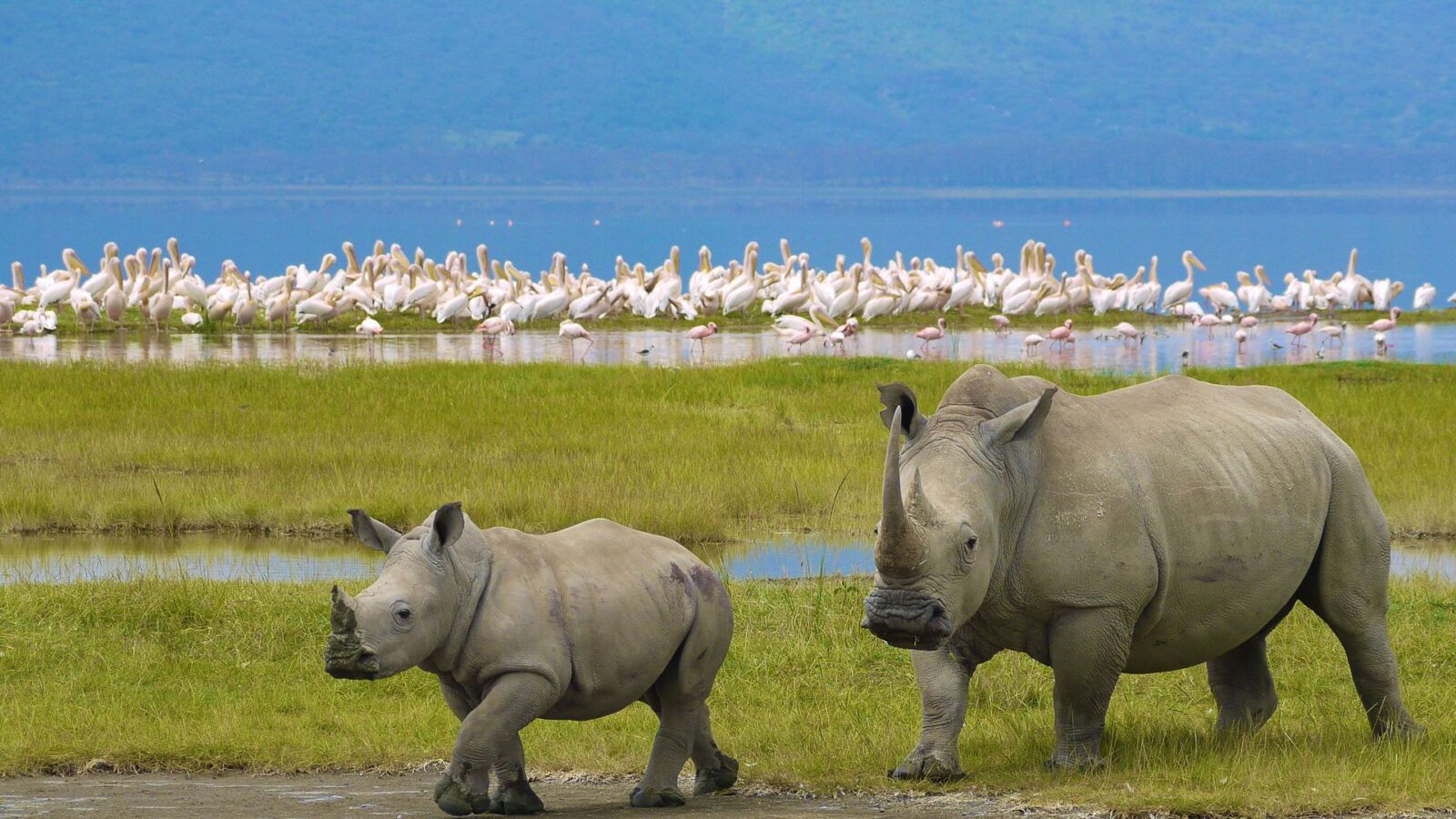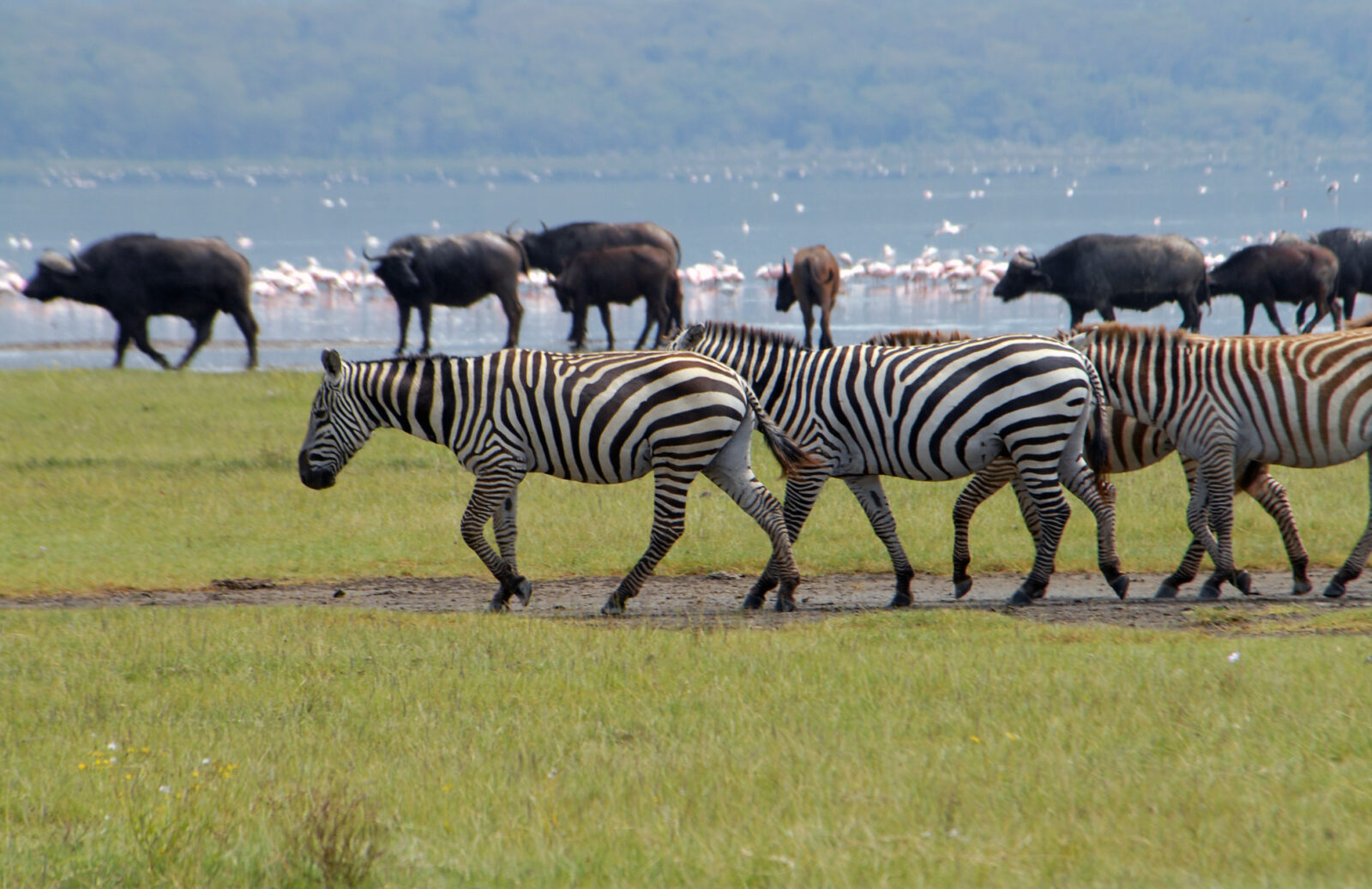
Lake Nakuru National Park— Guide
Lake Nakuru National Park – The Pink Heart of the Rift Valley
Set within Kenya’s breathtaking Great Rift Valley, Lake Nakuru National Park is one of East Africa’s most photogenic and ecologically diverse safari destinations. Centered around the shimmering alkaline waters of Lake Nakuru, this compact park spans approximately 188 square kilometers, offering a stunning blend of landscapes — from acacia woodlands and rolling hills to rocky escarpments and vast open plains.
Once famed for its millions of flamingos that painted the lake pink, Nakuru has evolved into a sanctuary of wildlife and conservation success. With its resident rhinos, leopards, lions, and over 450 bird species, Lake Nakuru National Park remains one of Kenya’s most beloved safari gems — a place where color, life, and serenity coexist in perfect harmony.
A Rift Valley Wonder
Lake Nakuru is one of the Great Rift Valley’s many soda lakes, enriched by minerals that sustain prolific algae growth — the very food that once attracted vast flocks of lesser and greater flamingos. While flamingo populations fluctuate due to water levels and feeding patterns, the lake still retains its dreamlike beauty, reflecting the blue skies and surrounding escarpments like a mirror.
The park’s varied ecosystems — from lake shores and grassy plains to dense acacia forests and rocky ridges — make it a microcosm of Kenya’s wider natural diversity.
Wildlife – A Compact Park with Big Attractions
Despite its modest size, Lake Nakuru National Park hosts an impressive concentration of wildlife. It is one of Kenya’s best places to see rhinoceroses, both black and white, protected within a secure sanctuary.
Game drives offer close encounters with:
White rhinos grazing near the lake’s shores
Buffaloes, impalas, and waterbucks browsing in the grasslands
Lions resting beneath acacias or scanning the plains from rocky outcrops
Leopards, often spotted lounging in the branches of fever trees
Rothschild’s giraffes, their elegant patterns standing out against the park’s green backdrop
Occasionally, you may also spot baboons, vervet monkeys, and elusive nocturnal animals such as civets and genets during evening drives.
A Birdwatcher’s Paradise
With more than 450 recorded bird species, Lake Nakuru is a haven for ornithologists and bird enthusiasts alike. Beyond the famous flamingos, the lake and its surrounding habitats attract an astonishing variety of avian life:
Pelicans gliding gracefully across the water
African fish eagles and Ospreys diving for prey
Yellow-billed storks, ibises, and spoonbills along the shores
Malachite kingfishers, bee-eaters, and sunbirds in the forests
Verreaux’s eagles soaring above the cliffs of Baboon Cliff and Lion Hill
During the wet season, migratory birds arrive from Europe and Asia, adding even more diversity to this vibrant sanctuary.
Scenic Viewpoints and Landscapes
Lake Nakuru National Park is as rich in scenery as it is in wildlife. Several elevated viewpoints offer breathtaking panoramas of the lake and surrounding plains:
Baboon Cliff: A popular stop for sweeping views across the lake, ideal for photography.
Lion Hill: Offers majestic sunrise vistas and frequent sightings of lions resting on rocky ledges.
Out of Africa Lookout: Named after the famous film, this viewpoint captures the timeless beauty of Nakuru’s landscapes.
The park’s mosaic of grasslands, forests, and cliffs creates endless opportunities for exploration, photography, and peaceful reflection.
Conservation Success and the Rhino Sanctuary
Lake Nakuru National Park stands as one of Kenya’s greatest conservation stories. In the 1980s, it became the country’s first rhino sanctuary, protecting endangered black and white rhinos from poaching. The population has since grown steadily, and Nakuru now plays a vital role in Kenya’s national rhino recovery program.
The park is also a safe refuge for Rothschild’s giraffes, relocated here to ensure their survival after habitat loss elsewhere. These conservation milestones highlight Nakuru’s legacy as a living example of wildlife protection done right.
Best Time to Visit Lake Nakuru National Park
The park is open year-round, but the dry seasons (June to September and December to February) are ideal for game viewing, as animals gather around water sources and vegetation is thinner.
The wet seasons (March–May and October–November) transform the landscape into a lush paradise, attracting migratory birds and offering vibrant photography opportunities — though some roads can become muddy.
Getting There
Lake Nakuru National Park is among the most accessible parks in Kenya, located about 160 kilometers (a 2.5–3-hour drive) from Nairobi via the scenic Rift Valley escarpment. The journey offers stunning viewpoints at Lake Naivasha and Elementaita, making Nakuru an easy addition to any Kenya safari circuit.
For travelers on tighter schedules, daily flights are available from Nairobi’s Wilson Airport to Nakuru Airstrip.
Accommodation Options
A wide range of accommodation options cater to all budgets — from luxury lodges perched on hillsides overlooking the lake, to mid-range tented camps and budget-friendly lodges inside or near the park. Many offer panoramic views, evening campfires, and the serene sounds of wildlife echoing through the night.
Staying overnight allows travelers to experience both sunrise and sunset game drives — when wildlife is most active and the park glows in magical light.
Activities in Lake Nakuru National Park
Game Drives: Morning and evening safaris reveal the park’s thriving wildlife and dramatic landscapes.
Birdwatching: With hundreds of resident and migratory species, it’s one of Africa’s most rewarding birding destinations.
Photography: Capture the contrast of wildlife against the backdrop of pink lake waters and volcanic cliffs.
Nature Walks: Guided walks along designated areas near the lake or forest edges offer intimate encounters with smaller flora and fauna.
Cultural Excursions: Visit nearby Nakuru town or local communities to experience everyday Kenyan life.
Conservation and Sustainability
Lake Nakuru’s success in wildlife protection has inspired national and regional conservation initiatives. Its balance of tourism, research, and community involvement demonstrates how responsible travel can coexist with preservation. Visitors are encouraged to respect park regulations, minimize waste, and travel sustainably to help protect this fragile ecosystem.




